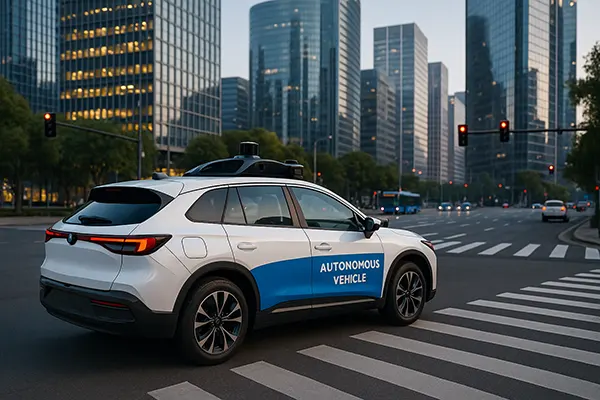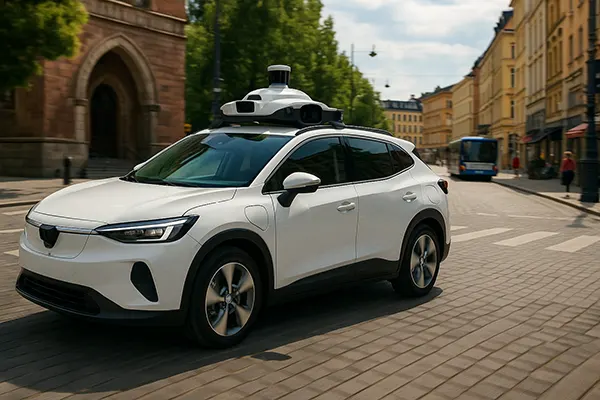
Pitfalls of Autonomous Taxis: Insights from Early Urban Pilot Projects in 2025–2026
The first full-scale trials of autonomous taxis in major cities have moved from conceptual testing to real urban operation, revealing a mix of achievements and complications. By 2025, several regions allowed commercial or semi-commercial autonomous taxi fleets on public roads, but their progress has also shown legal, technical and social challenges that must be addressed before widespread adoption becomes routine.
Legal Barriers Facing Autonomous Taxi Rollouts
One of the most complex issues for autonomous taxi operators in 2025 has been the rapid evolution of legal frameworks across countries and regions. Cities in the United States, China and parts of Europe have adopted different approval processes, often requiring companies to navigate inconsistent or overlapping regulations. For example, in California, companies such as Waymo must comply with strictly defined disengagement reporting rules, driving data transparency obligations and continuous software evaluation, while neighbouring states may impose fewer requirements. This legal fragmentation complicates cross-state expansion plans for operators.
European cities, including Hamburg and Munich, take a more conservative regulatory approach, demanding extensive safety validation and strict liability definitions. These rules generally slow deployment but increase systems oversight. Meanwhile, China’s major urban centres, particularly Shenzhen and Wuhan, continue accelerating approvals for fully driverless taxis. However, they maintain rigid expectations related to cybersecurity, vehicle-to-infrastructure integration and operational zones.
Across all these regions, liability remains a central debate. Questions persist regarding responsibility when a crash involves an autonomous taxi—whether accountability lies with the manufacturer, fleet operator, software developer or city authority. As of 2025, many jurisdictions are still drafting legislation to clarify this issue, which limits operators planning large-scale fleet expansions.
Case Studies Illustrating Legal Complexity
San Francisco offers one of the clearest examples of fragmented policy shaping autonomous taxi operations. Waymo continued service after suspended approvals for Cruise in late 2023, yet the city implemented additional conditions in 2024 and 2025 relating to traffic obstruction and emergency vehicle interactions. This demonstrates how local authorities can directly influence fleet capability, even when state-level approval remains intact.
In contrast, Shenzhen’s 2025 framework allows approved companies, such as Baidu’s Apollo Go and AutoX, to run driverless taxis without onboard operators. However, strict compliance with digital infrastructure requirements means rural regions cannot adopt such services at the same pace. The nationwide approach supports faster progress in major cities but produces inconsistencies between municipalities.
In the European Union, efforts to harmonise autonomous mobility laws are ongoing, though national variations persist. Germany’s landmark 2021 law enabling Level 4 operation has translated into more tangible testing zones in 2024–2025, yet each city implements different oversight standards. This divergence demonstrates the challenge of scaling autonomous taxi fleets across borders.
Technical Challenges in Real Urban Environments
Technical progress in autonomous taxis has been significant, yet pilot programmes in 2025–2026 highlight persistent obstacles. Among the most reported issues are sensor interference, unpredictable road behaviour from human drivers, and poor performance during extreme weather. These factors remain difficult for current systems, even when supported by large neural models and improved mapping technologies.
San Francisco’s steep terrain and dense traffic present ongoing challenges. While companies have improved their handling of pedestrians and cyclists, reports from city transport authorities indicate that vehicles sometimes hesitate excessively in uncertain scenarios, creating bottlenecks. This reluctance may enhance safety but reduces operational efficiency, leading to complaints about delays.
In Wuhan and Beijing, where weather conditions frequently shift, lidar and camera systems occasionally struggle with heavy rainfall or smog. Engineers continue improving sensor fusion algorithms, but unexpected visibility drops still produce temporary system limitations. These experiences show how autonomous taxis perform well under predictable conditions but face difficulties in complex or unstable environments.
How Technical Limitations Influence Deployment Speed
System disengagements—moments when safety operators or remote supervisors must intervene—remain an important measure of performance. Although such incidents have significantly decreased since 2022, they still occur in ways that affect planning and licensing. Operators in the United States must report these incidents publicly, while other regions require internal submissions but no disclosure, complicating global comparisons.
Infrastructure dependency also slows rollout speed. Cities with advanced digital mapping, dedicated roadside sensors or vehicle-to-infrastructure communication zones show more reliable operation rates. Without these tools, autonomous taxis rely solely on their onboard systems, which increases error risk. This is one reason why Shanghai and Shenzhen outperform many Western cities in large-scale driverless taxi availability.
Battery performance and fleet maintenance also influence operational readiness. Frequent short-range journeys with numerous stops reduce efficiency and require larger charging networks. While manufacturers are developing faster charging technologies for 2026, infrastructure remains insufficient in many regions, which directly affects daily fleet capacity.

Public Reception and Social Implications
Public acceptance plays a major role in the long-term success of autonomous taxis. Surveys in the United States and Europe in 2025 indicate moderate trust, with many passengers appreciating consistent driving behaviour but expressing concerns about unexpected stops and communication during emergencies. Clear information displays and better in-car instructions may help reduce anxiety.
In China, riders show higher confidence, partly due to strong integration of autonomous technology into everyday life. Reports from Beijing and Shenzhen in 2024–2025 highlight positive feedback, especially regarding predictable pricing and accessibility in suburban areas. However, residents still raise concerns over data handling, privacy and monitoring systems that accompany these services.
Social challenges also include job displacement concerns among taxi drivers and ride-hailing operators. While some cities are exploring retraining programmes, these efforts remain limited. Without clear long-term plans, workforce resistance could slow wider adoption of driverless taxi fleets.
Real User Reactions from Global Pilot Cities
Passenger reviews from San Francisco in 2025 frequently mention smooth rides and consistent speed control but note confusion during unexpected road closures. Some users express unease when the vehicle stops for too long in unclear situations, which affects perceived reliability even when safety is not compromised.
In Shenzhen, users praise the convenience of app-based robotaxi booking and appreciate the transparent safety reporting dashboards integrated into vehicles. At the same time, discussions on local forums highlight concerns about data retention policies, emphasising a desire for clearer information regarding how ride data is stored and used.
European cities report mixed reactions. Riders in Munich and Hamburg commend the cautious driving approach but sometimes describe trips as overly conservative. This behaviour aligns with strict local safety policies but can reduce the feeling of efficiency compared to human-operated taxis.
